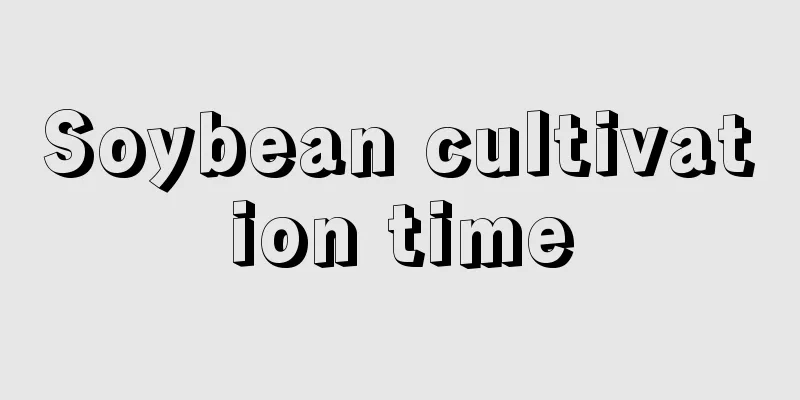In which month is cabbage usually planted?

|
Cabbage is a nutritious vegetable with a crisp taste, but in order to grow healthy cabbage, it is crucial to choose the correct sowing time and master the key points of planting. So, in which month is cabbage generally sown? Let’s take a look below. 1. In which month is cabbage generally sown? One of the most suitable seasons for growing cabbage is spring, and it is usually sown from February to April. However, in early spring, due to the low soil temperature, measures need to be taken to keep warm and moist, such as building small sheds or covering the ground with film. As the temperature rises, cabbage gradually enters its growing season. Another suitable season for sowing is autumn, which usually takes place from July to September. However, you need to pay attention to the effects of drought and high temperature when sowing in this season. You can take some measures to regulate humidity and temperature, such as spraying water or using shade nets to cool down. When choosing the sowing time, it is necessary to determine it based on the local soil conditions and climate, and avoid the effects of extreme weather such as frost and drought on cabbage growth. Before sowing, it is necessary to apply sufficient base fertilizer and till the soil to provide sufficient nutrients for the growth of cabbage. 2. Key points for planting cabbage 1. Variety selection Choosing a cabbage variety that is suitable for local climate and soil conditions is one of the keys to successful planting. When choosing varieties, factors such as growth period, disease resistance, stress resistance, and yield need to be considered. At the same time, you also need to choose varieties with excellent quality and good taste. 2. Sowing method There are two methods for sowing cabbage: direct seeding and seedling transplanting. Direct seeding refers to sowing directly in the field, usually by row sowing or hole sowing. Seedling transplanting means raising seedlings on the seedbed first, and then transplanting them into the field when the seedlings grow to a certain size. The seedling transplanting method can advance the sowing time and improve the survival rate and yield. 3. Field management During the growing period of cabbage, scientific field management is required, including weeding, watering, fertilizing, disease and pest control, etc. In terms of weeding, you can use manual weeding or herbicides ; in terms of watering, you need to keep the soil moist to avoid excessive drought or waterlogging; in terms of fertilization, you need to reasonably match nutrients such as nitrogen, phosphorus, and potassium to promote the growth of cabbage; in terms of disease and pest control, you need to regularly check the growth of the plants, and promptly detect and prevent the occurrence of diseases and pests. 4. Harvesting and storage Cabbage is generally harvested 60-80 days after the end of the growing season. When harvesting, use a sickle or a knife to cut the cabbage, being careful not to damage it. After harvesting, it can be stored. Cabbage can be spread flat in a ventilated place indoors, avoiding direct sunlight, or stored in an environment of about 10°C for 1-2 months. In short, growing cabbage requires choosing the sowing time reasonably and mastering the key points of planting. Only by doing a good job in these aspects can we grow cabbage of high quality.
|
<<: Lilac Care and Planting Tips
>>: Maintenance methods and techniques of fortune tree
Recommend
How to grow Magnolia tianmu
1. Soil Magnolia tianmu is more suitable for grow...
What should I do if my buttocks are growing too long?
What does it look like when the buttocks are grow...
How to care for newly bought Phoenix bamboo
1. Soil You should carefully check the soil in th...
Can ginger be grown in pots?
Can ginger be planted in flower pots? Ginger can ...
What soil is suitable for planting jade dew
Soil for Gyokuro Jade plant likes acidic soil, an...
How to grow sugarcane to make it crisp and sweet (Sugarcane planting methods and cultivation techniques)
How to Plant and Manage Sugarcane In the Jianghan...
Zile breeding methods and precautions
Purple Joy is easy to grow. It is a relatively ha...
How to plant Hypericum in pots
1. How to pot plants: When planting a potted Hype...
How to grow tiger jasmine
1. How to raise 1. Light: It is suitable for grow...
These 8 kinds of flowers are like water buckets. The more they are watered in summer, the more prosperous they will be, but they will die if they lack water!
Blue Snowflake Speaking of flowers that are must-...
Spring carrot planting time and method cultivation technology and management
Spring Carrot Planting Time Spring is a good time...
What are the cultivation methods and precautions of the green leaf arrowroot
Cultivation method of green leaf arrowroot The gr...
Can durian be grown in Hunan?
Can durian be grown in Hunan? Durian can be grown...
What are the ornamental ferns?
Nephrolepis A non-flowering fern, it is named aft...
Can Desert Rose be planted in the ground?
Can Desert Rose be planted in the ground? Desert ...









